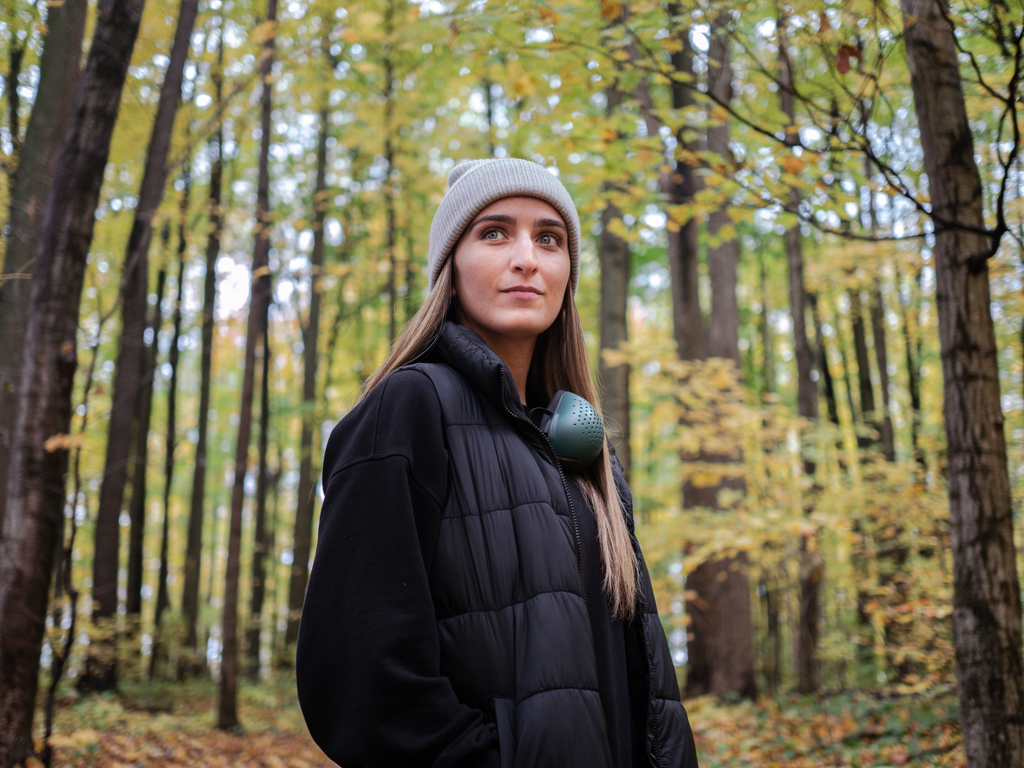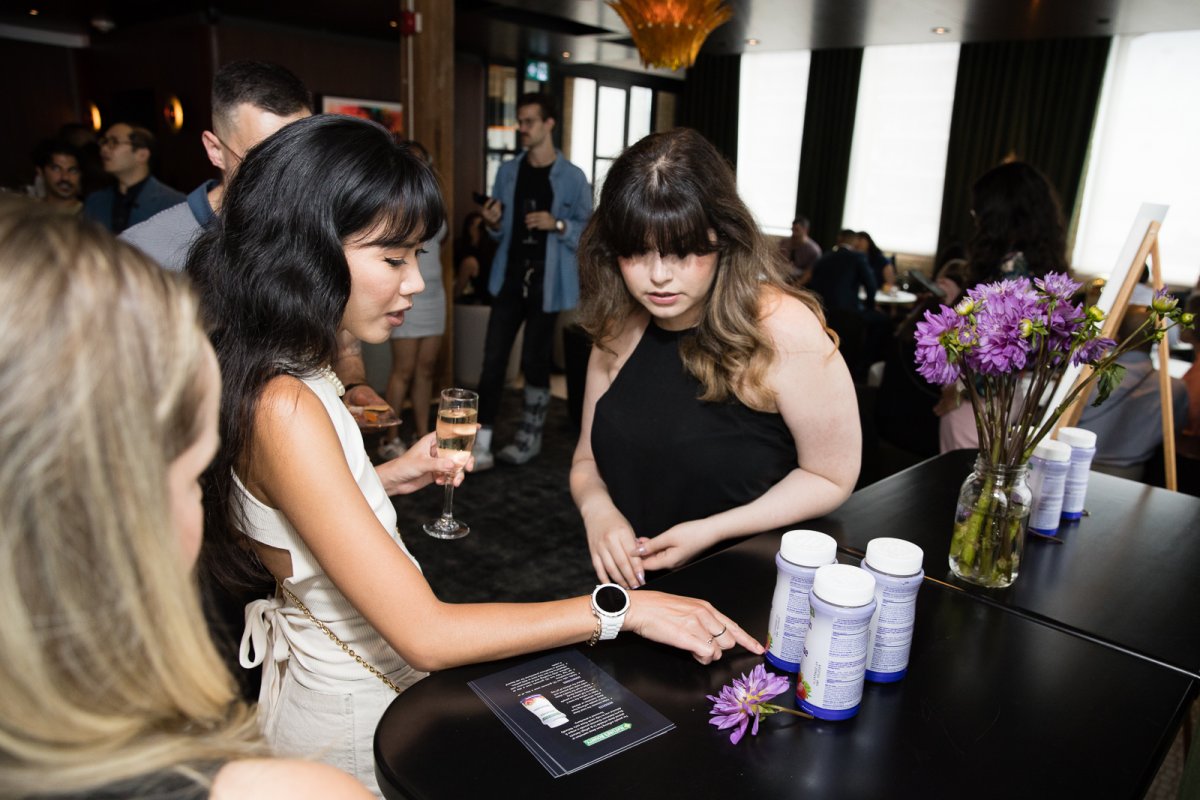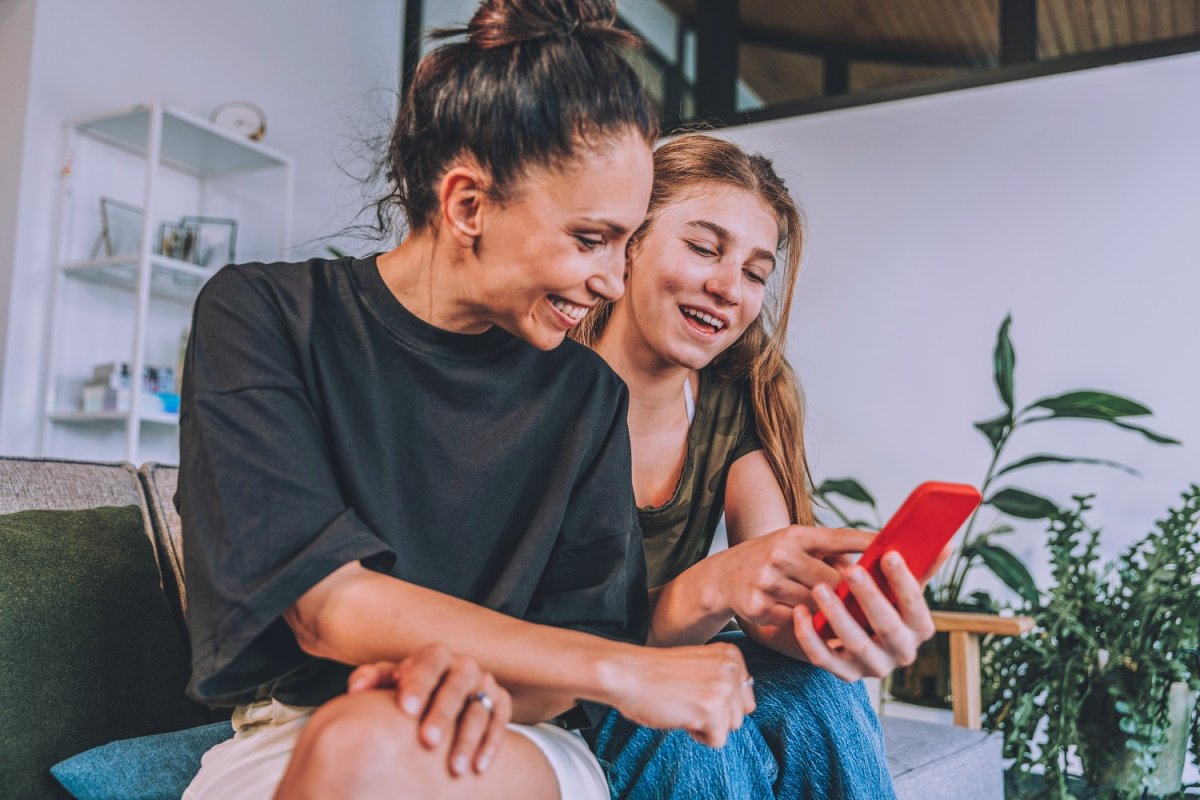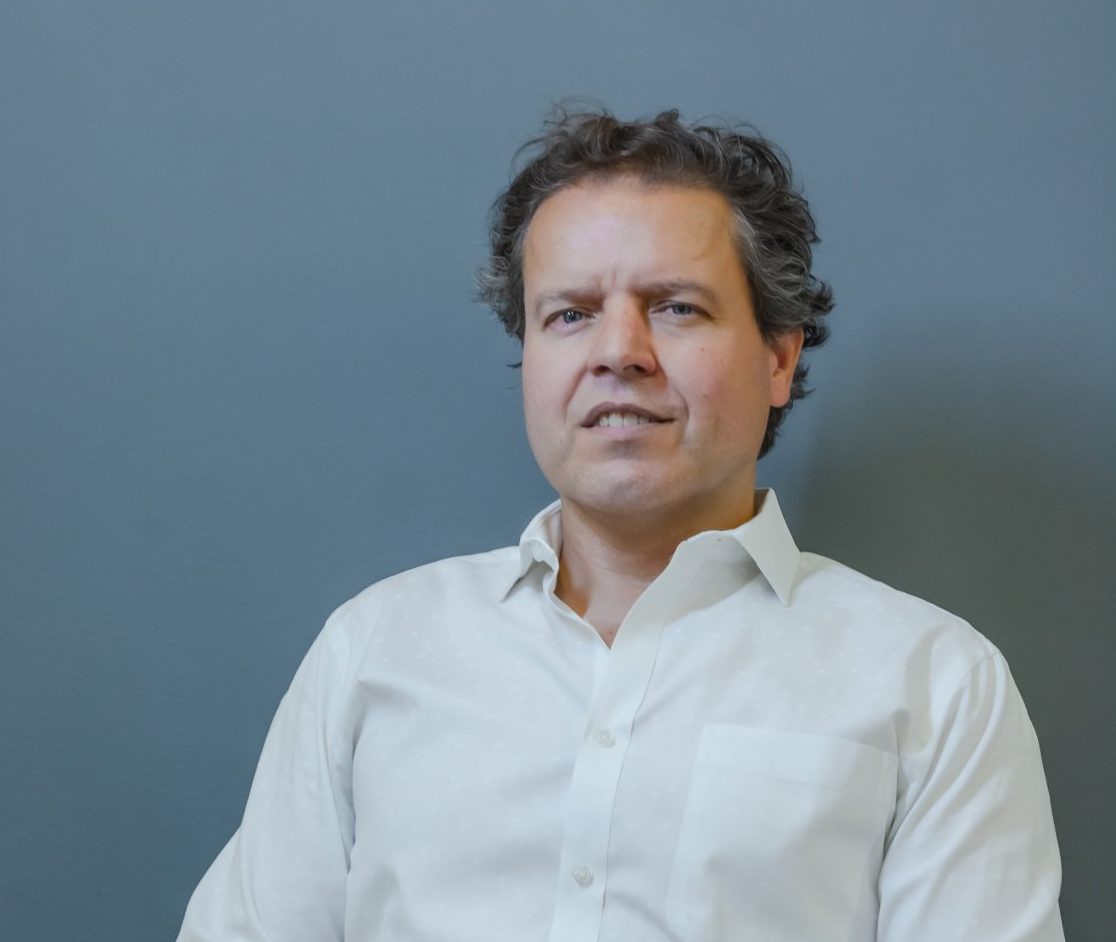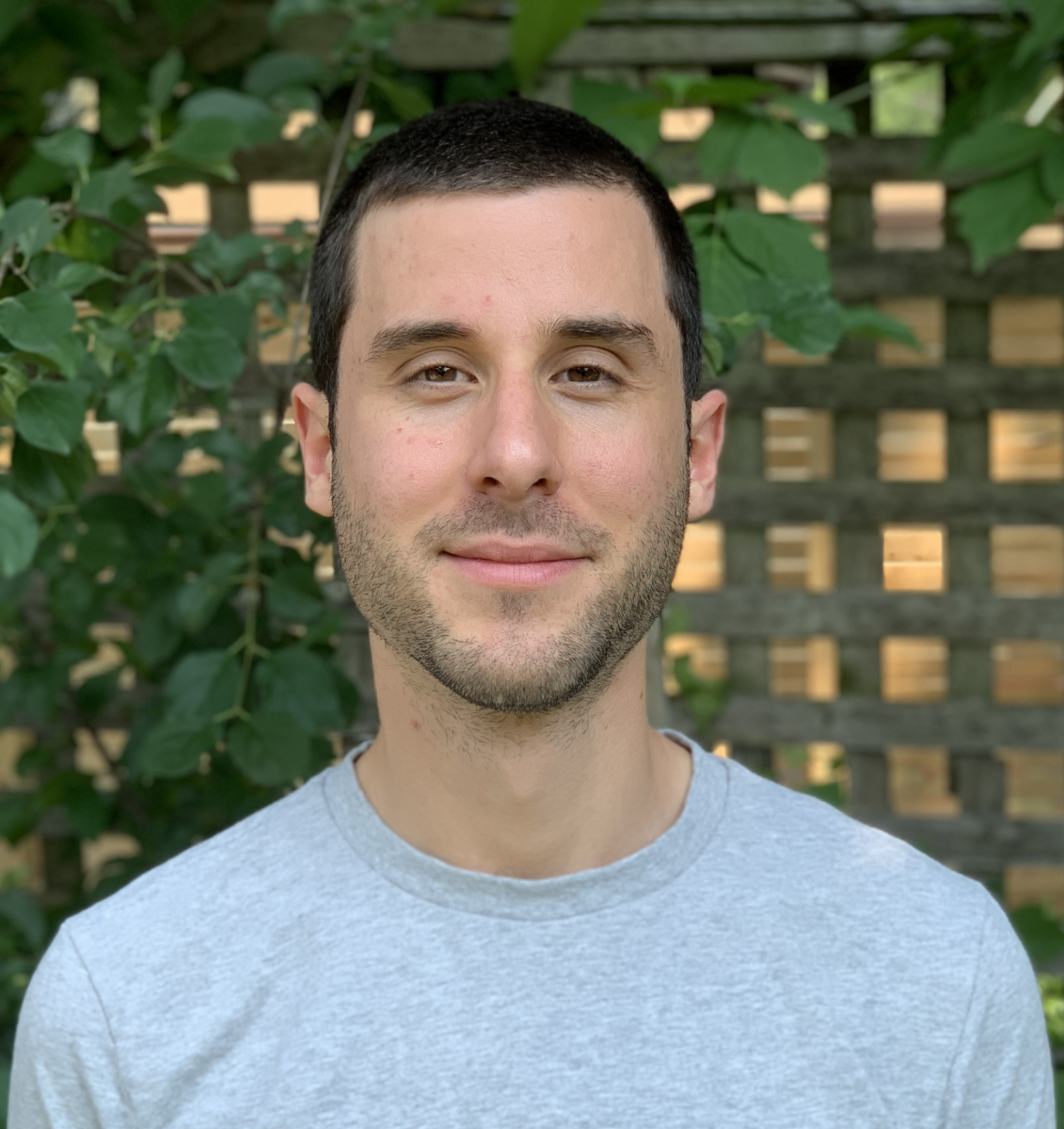[vc_row][vc_column][vc_column_text]Clean air is something that much of the Western world has for granted. While many countries deal with smog and pollution clouding their skies, Canadians have been able to bask in the sunlight and take deep breaths in of the fresh air around them. It wasn’t until the COVID-19 pandemic that many began questioning the quality and cleanliness of the air for the first time.
For O2 Industries, clean air has always been a priority.
In 2014, Peter Whitby, CEO of O2 Industries, travelled to Asia for the first time. It was there that he learned of the smoggy reality that many people face each day. He came back to Canada determined to figure out a way to better filter the air for personal use.
After years of designing and engineering—including an attempt at making a jacket with a built in mask—the O2 Curve was released in 2018.
“It’s a fashionable consumer respirator. You can go to the paint section of Home Depot and get one of those things that covers your entire face, or you see those face coverings that everyone is wearing, but those are just masks,” said Whitby. “The idea is to fuse them. And that’s a very exciting opportunity because it’s a totally new category.”
The O2 Curve is a respirator, built to filter the air you breathe in.
While the cloth masks that many people sport nowadays can help lower the transmission of COVID-19, the O2 Curve effectively filters the air that the wearer breathes in.
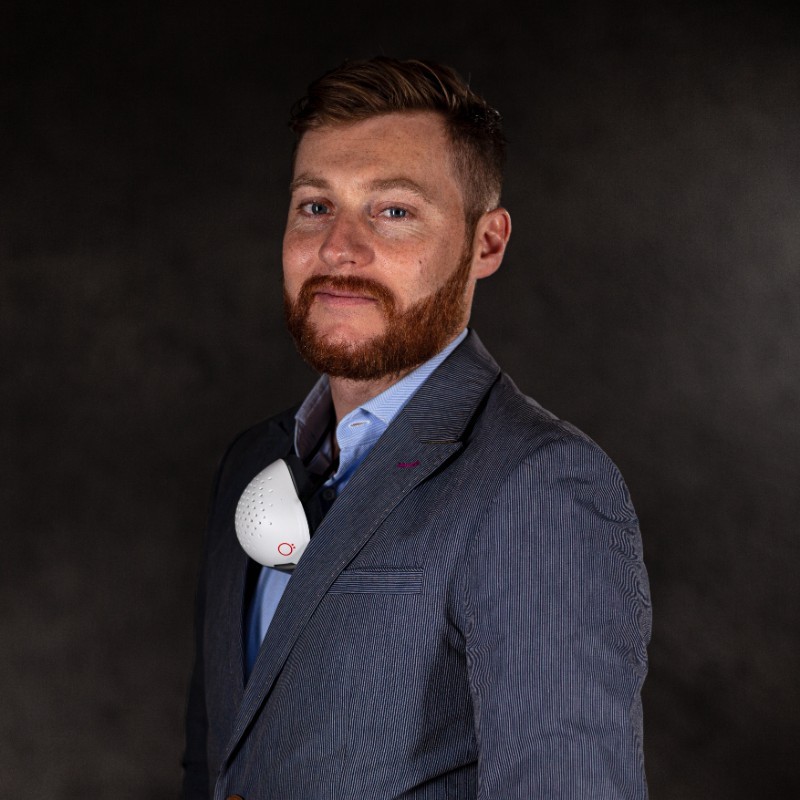

Given the increase in people’s awareness of the quality of air they breath, O2 Industries has skyrocketed throughout the pandemic, even striking up a partnership with the UFC to help keep their athletes safe.
While Whitby never could have predicted the rise in popularity, the pandemic has helped solidify that O2 Industries’ passion for clean air is valid. It also helped drive even more innovation from the company.
For its efforts, O2 Industries was selected to participate in the Lazaridis Scale Up Program. The program helps high-potential, fast-growing Canadian tech companies scale and compete on an international stage by providing the expert support they need to achieve global success.
Being a part of the program is one step closer to Whitby’s plan to be a household name. Given the demand for clean air, O2 Industries certainly seems to be on its way.
For this week’s Start-Up Spotlight, Bay Street Bull spoke with Peter Whitby, CEO of O2 Industries, about the demand for clean air and how O2 Industries helps make it happen.[/vc_column_text][vc_text_separator title=”Q&A” color=”custom” style=”dotted” border_width=”3″ accent_color=”#e22828″][vc_column_text]O2 Industries was in the respiratory market before people were ever questioning, ‘Is the air I’m breathing clean?’ What has it been like for you to see COVID-19 take over the world and then all of the sudden, something that you were passionate about for so long, became a priority for everyone?
It’s been incredible, because in Canada and the U.S. we’ve kind of taken clean air for granted. We have beautiful clean air here. But, if you’ve ever traveled to Southeast Asia or China, or even London and Paris, they deal with air pollution almost every single day. COVID-19 has really put a spotlight on the importance of what you breathe. The virus is spread through particles in the air, and so it’s really just emphasized how important that is. So, I guess you could say it’s kind of validated some of our ideas that we weren’t crazy for engineering respirators.
What peaked your original interest in creating respirators?
In 2014, I had the opportunity to travel to Asia for the first time. I was tagging along with my friend, who’s actually my co-founder, Rich Szasz, and he was importing furniture from China for student buildings, so that was the reason for the trip. As we toured our way around China, and specifically Beijing, we discovered air pollution—or I did—for the first time. It was April, early May and you’d get this tickle in your throat. We wouldn’t see the sun for days at a time. And for the first time, we saw everyone wearing masks, that type everyone’s wearing now, the disposable medical masks. We thought, well, first of all, that doesn’t work—it’s not sealing anything. And second of all, it looks ridiculous.
There was a comment that Rich made, he said, ‘You know, I’m surprised they don’t have like a nice scarf or a nice jacket with a filter built inside.’ When I came back to Canada, it kind of stuck with me. I hired a designer, I designed a jacket, I hired a seamstress and sewed it up. And so I built this this ridiculous jacket that had the zipper up the size and one side went up over your nose and then I just jammed the 3m filter in. So, that’s the genesis, that’s how it started. From there, obviously it evolved—we don’t make high end clothing.
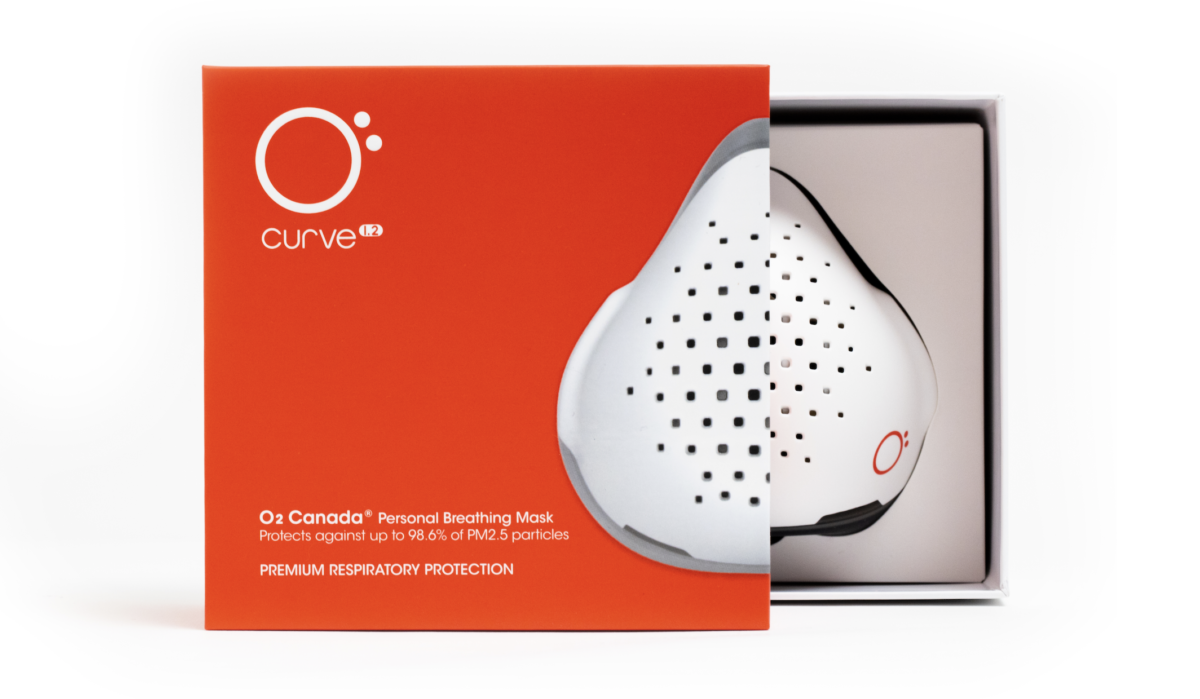

Going back to your original question, so many of the ideas we’ve had have just been validated. You know, a really high-end scarf with filtration is the kind of thing that is exactly needed right now. So, that idea is not crazy at all. With filtration and respiratory, there’s a little more needed than that kind of cover, but the idea is very valid [now].
In your own words, can you describe the difference between a respirator and a mask?
It’s very, very simple. A mask is meant to protect the people you’re around, and a respirator protects you—it protects the wearer. In a medical setting, they put those disposable masks on patients to protect the medical staff. But really, if you want to take care of yourself, if you’re on the subway, in a crowded office or classroom, you should really wear a respirator. Be selfish and worry about yourself.
What’s the technology behind a respirator? How does it protect you more?
When we think about a respirator, like the O2 Curve, it really needs to accomplish two things. Number one, it needs to fit right. What fit means is that it creates a seal around your nose and your mouth. That’s critical for filtration. And then secondly, it’s the filter itself. You need to be able to filter out greater than 95 percent of the particles—ideally it’s 99 or 100 percent. So those are the two things, plain and simple. With our product, the O2 Curve, we have two sizes. One is called low bridge fit, which is for people with a lower bridge on the nose; and a hybrid nose fit, for a larger nose. It’s kind of taken from how glasses are measured.
It’s interesting that the measurement has to do with the nose, versus masks that you’re seeing out there with child or adult sizes.
We are very fortunate with the O2 curve and how it’s performed. According to Health Canada and National Institute for Occupational Safety and Health (NIOSH), our respirator fits all the 10 of the facial profiles that they have outlined—we go 10 for 10. So, one, the fit is critical. Filtration is number two. Those are the two things you need [to be considered a respirator].
You guys had some pretty exciting news this past month: a partnership with the UFC. How did that come about?
Basically we’ve been reached out to from every major sports organization on earth, and we specifically started getting a lot of MMA athletes. As you know, going to the gym is a hotbed for COVID-19. So, they’re unable to train with each other—a face covering doesn’t cut it. We started getting inquiries from a lot of agents to see if we can help their athletes. So, we started talking to the UFC and it fit our vision because it’s global. They just spent the last month in Abu Dhabi. They’re going into China in December. They’re huge in America. It’s a global brand. So, that aligned with us, and it’s been crazy [in a good way]. On Saturday we had visitors from 117 countries to our website. It’s like, if we could protect some of the greatest athletes on earth, then it’s good enough for everyone else.
You guys are working with George St-Pierre to create a respirator that’s specific towards high-performing athletes. What goes into that design that differs from your regular O2 Curve?
It’s a really new product. When we design and engineer respirators, we like to dive in. We just launched a tactical respirator last week, which was two years of research and development. We were working with Canada’s most elite soldiers [to design it]. We went to the gun range with them. We got to understand how it fits into their ecosystem. So, the same thing will happen with this athletic respirator. We will be going to the gym with George St-Pierre and grappling with him, and the designer will be taking notes on key things. One of the learnings recently is that female athletes often wear their hair in a ponytail. And so we have to take into consideration where the straps fit on their head. It might have a high strap, a medium strap or low strap, depending on the ponytail. It’s about diving in and understanding what the consumer or what the athlete needs.
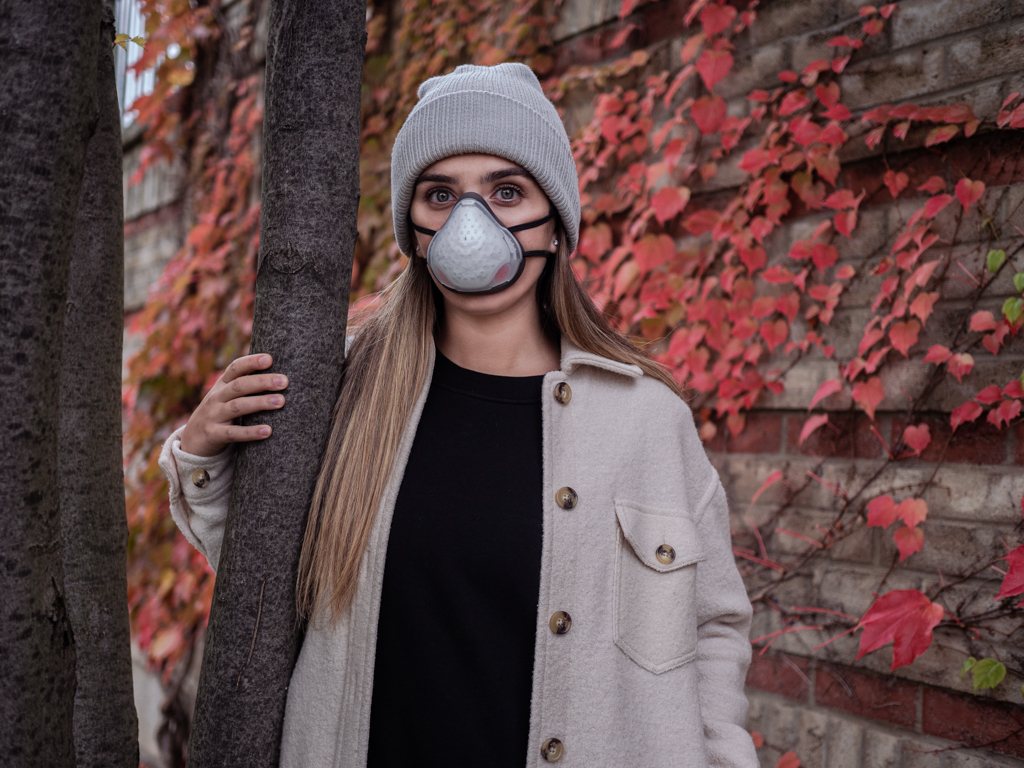

Another interesting and exciting announcement was that you’re taking part in the Lazaridis Scale Up program. What do you hope O2 Industries gets out of the program?
We’re very excited. Our company is scaling up. We’ve gone from six team members to over 60 in six months. We are literally scaling. So, I think there’s alignment there. Truthfully, we’ve truthfully never done this before. Right? I’ve never been the CEO of a tech startup that’s scaled. So, I think learning from the companies that have come before us, learning from Mike Lazaridis himself hopefully [laughs], learning from Canadians that have made companies that have made a global impact is important. I’m going to try and lean on the mentorship. I think they have a really strong reach into Silicon Valley, and the U.S. tech scene, which we don’t really have. We’ve got a lot of friends down there, but not a lot of exposure or a network down in California.
As you said, you’ve grown from six to 60 team members over the last six months. What’s been the biggest learning curve for you guys during that time?
Oh boy. I think for me, HR: human resources and hiring staff. I came from real estate development and a company with 10 people, so in my career, I never really dealt with HR. I never had somebody hire me or things like benefits. But, we get incredible feedback about our culture and that’s really what I’m trying to do—build a great culture. So, a lot of learnings in that area.
How has the e-commerce surge due to COVID-19 affected O2 Industries?
It’s been a fundamental change to our business. We are a legitimate business now. I mean, we were in revenue before, but we were very small and we were trying to survive. And now, we’re really growing and thriving. We don’t just sell cloth masks; we innovate products combined with an innovative business model. Focusing on e-commerce has proven to be very successful. Traditionally, Honeywell and 3M have these massive sales teams; there’s a senior VP of sales and all these levels, but that’s changed. People want a high quality product, but they want to buy it online. They don’t necessarily want to go to a health and safety store.
And if you were to sum up the overall mission for O2 Industries, what would you say it is?
Our mission is to help people breathe clean air. Very, very simple. It started with air pollution, and we saw huge upticks prior to COVID-19 with the Australia, California and BC wildfires. Now COVID-19 has just reinforced that particles in the air can affect human health. That’s what we’re here for—to help you breathe clean air.
As you guys are scaling up, you must have big plans for the future. What are the goals for O2 Industries in the next few years?
The big piece that we’re working on right now is a true medical respirator. We have a new product we kicked off manufacturing when COVID-19 hit. We understood the problem in hospitals, and we started developing a medical respirator. This is a reusable respirator, which is innovative in itself. It’s a new category. It has a double filtration system to protect nurses and doctors. So, they see a patient, there’s an outer scrim they can dispose of while being protected, and then when they go see the next patient they put on a new outer scrim.
We are working feverishly to bring this out. We’re manufacturing it in Ontario and we want to provide Ontario healthcare workers with this first. We think that it has implications to hospitals worldwide; it saves the hospital money, because the disposable filter is much, much cheaper than an N95 mask. So, it’s very exciting. Our immediate focus is this medical respirator to help during the pandemic.
Beyond that, we want to be a household name. I want you to travel to Australia to visit a friend and you see us in the airport when you land. Or you wear O2 on the flight and you are safe when you get there. We want to be a global brand. That’s the longterm goal.[/vc_column_text][vc_separator color=”custom” style=”dotted” border_width=”3″ accent_color=”#e22828″][/vc_column][/vc_row]


